Interred in the cemetery are 1,204 soldiers buried in 46 collective and 829 individual graves. Of these 912 are from the Austro-Hungarian army (and nearly half of them Poles), 65 are from the German army, and 227 are from the Russian army. But that only hints at the diversity of troops who made up these armies, including Austrians, Germans, Russians, Hungarians, Czechs, Slovaks, Ukrainians and Poles. A unique aspect of the cemetery is that it makes no distinction between rank, religion, ethnicity, nation or which side of the war these soldiers were on. All are treated equally - buried under modest wooden crosses with simple nameplates, or in collective graves under larger headstones for those who could not be identified. For this reason - its ecumenical message of fraternity and egalitarianism - the cemetery was granted the European Heritage Label in 2016.
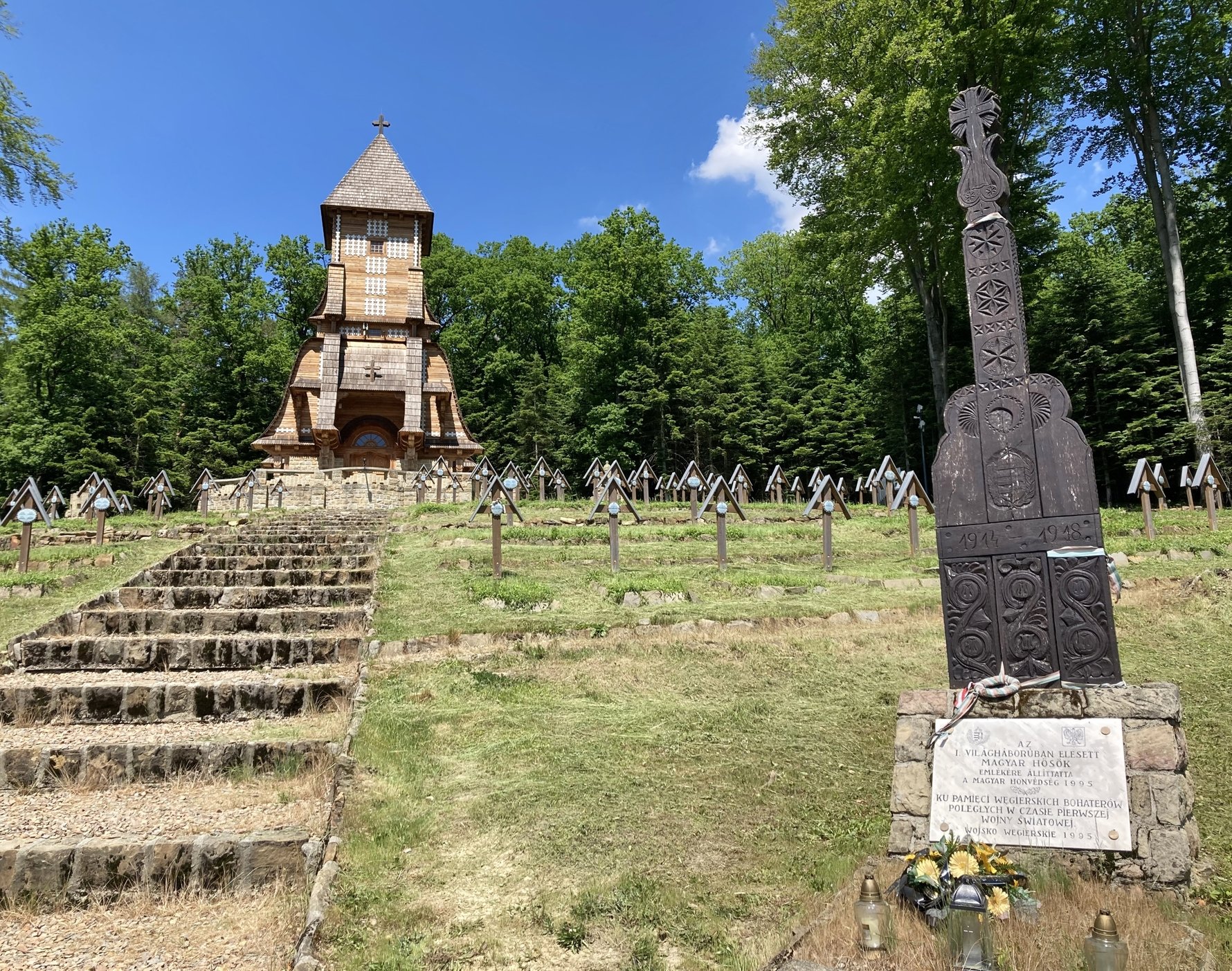
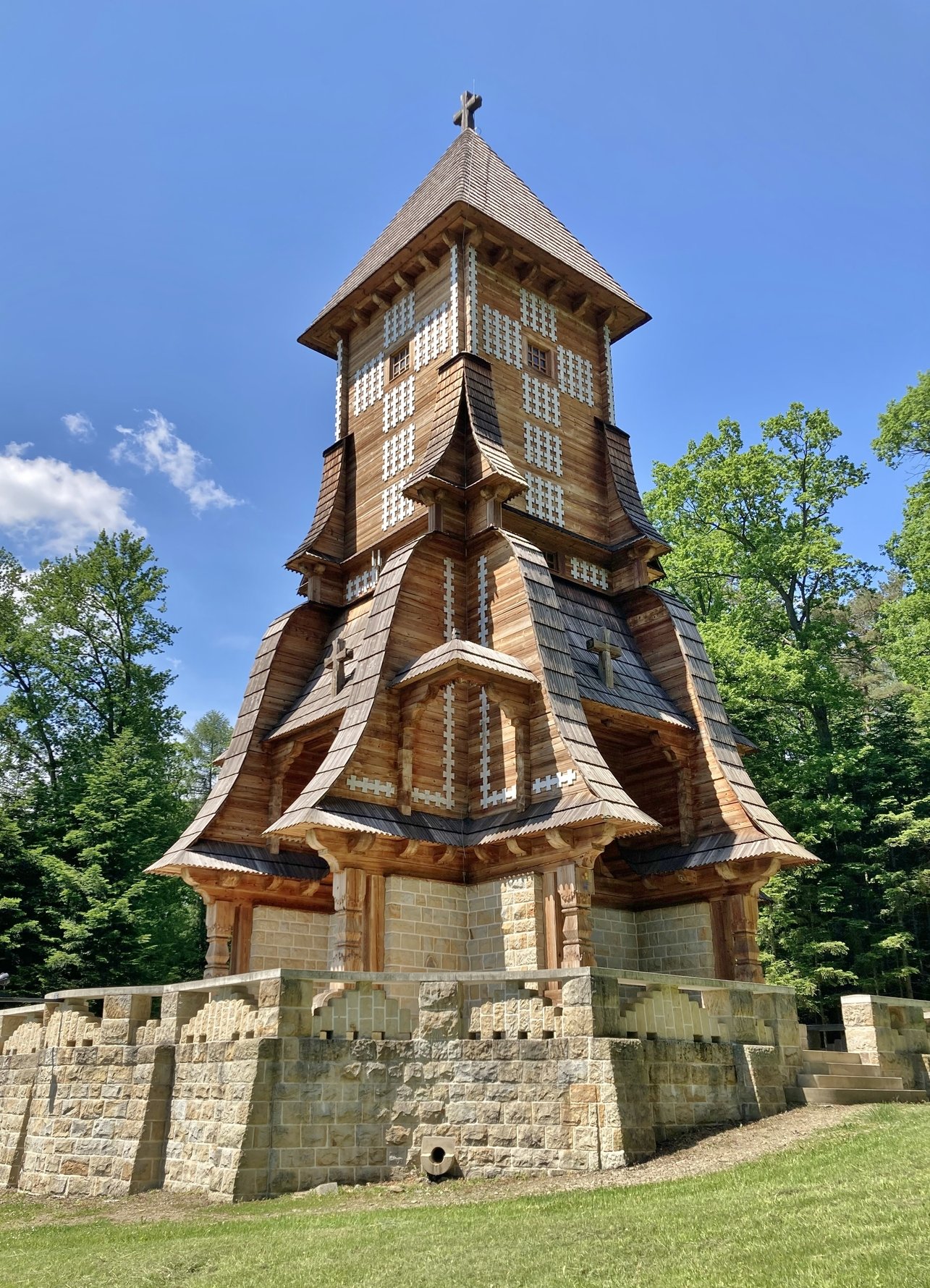
The Cemetery Chapel (Gontyna)
Built by Austro-Hungary's War Graves Department in 1917, and designed by Jan Szczepkowski, most of the actual labour was done by Russian and Italian prisoners of war (ah, how very egalitarian indeed). The defining feature, however is the tall cemetery chapel at the top of the hill designed by Slovak architect Dušan Jurkovič. With a ground floor and foundation made of local stone, the rest of the structure is timber. While the interior framework is shaped like a cross, there's a wooden spiral staircase leading up to the viewing tower. The exterior, meanwhile, is covered in wooden shingles and adorned with additional crosses that stand out in relief. Although Jurkovič claimed to be influenced by Carpathian and Old Slavonic folk architecture, to us the curious structure looks like a weird wooden rocketship (but in the best way possible, brother, bravo). Unfortunately the original building burned down in 1985 under mysterious circumstances (our guess is a fire), and though it was rebuilt to Jurkovič's original designs in 2014, no new altar or interiors were installed and the building is no longer open to the public.Getting to the top is strenuous work, but the excellent views are worth lifting those knees for.
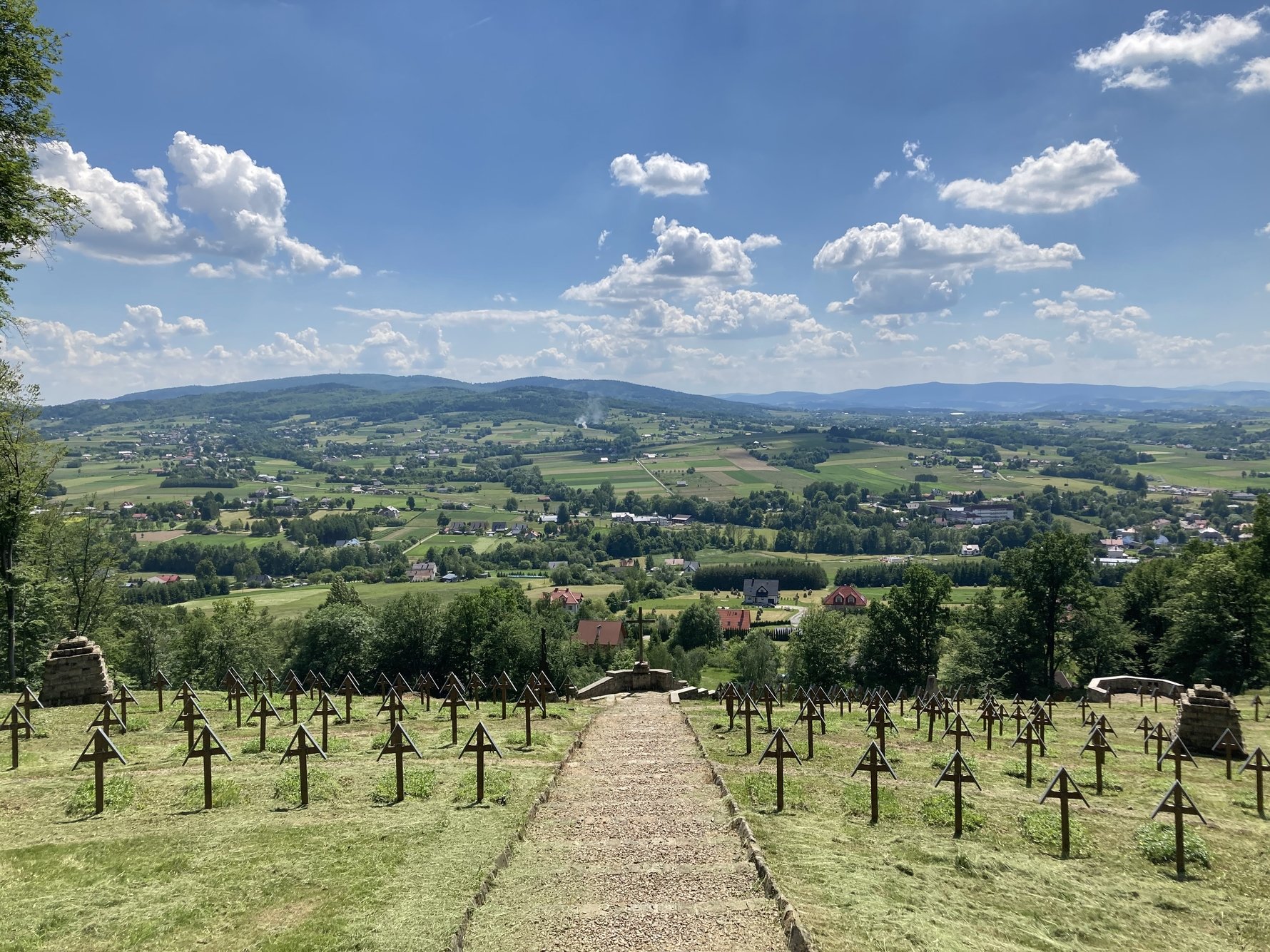
Note that WWI Cemetery 122 - the much smaller resting place of 154 soldiers of the Russian army, buried in 15 collective and 3 individual graves - is also located below on the same trail. There is also a quite large shaded picnic area between the two.
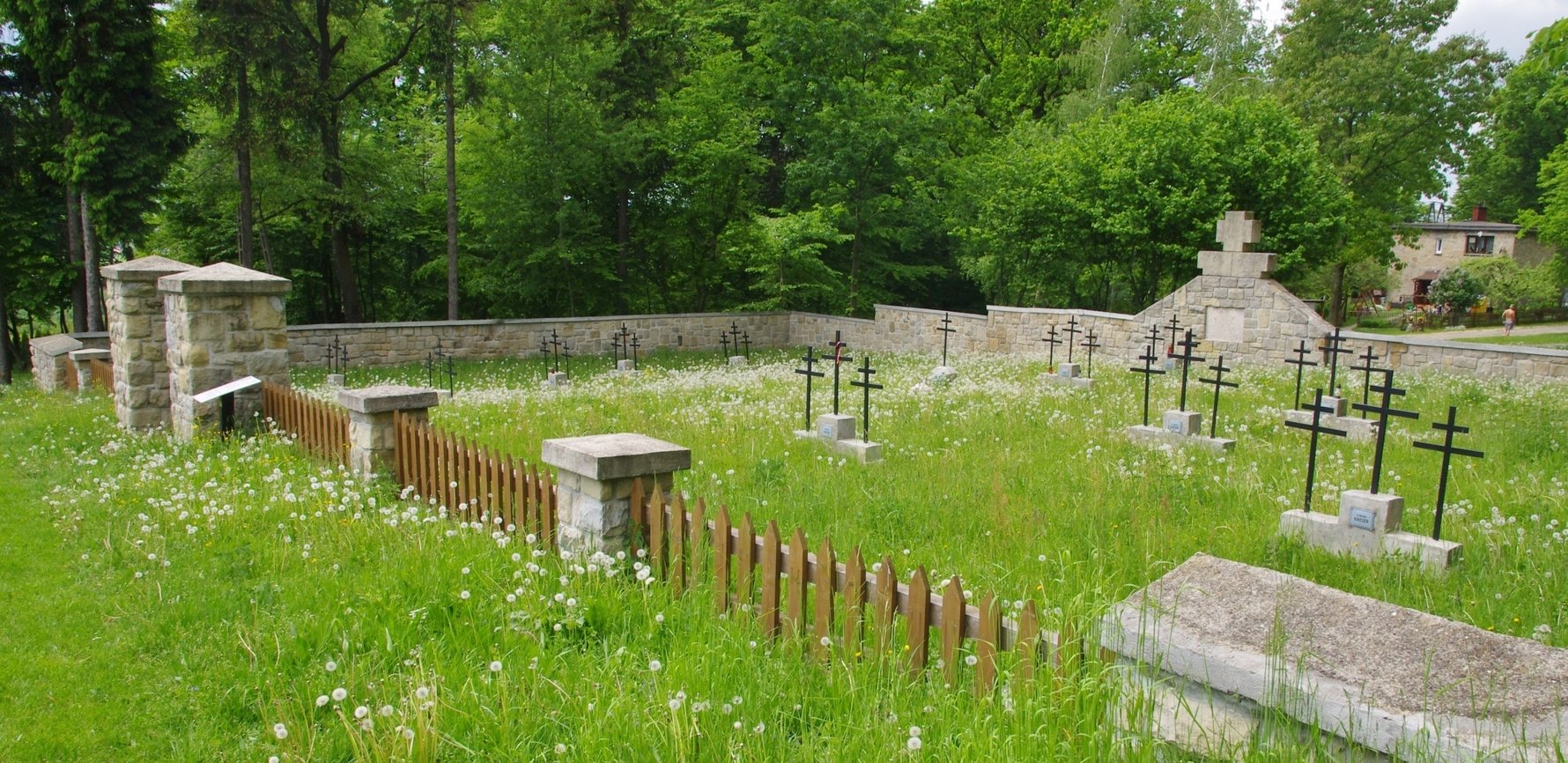


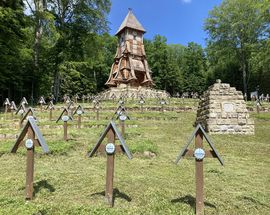
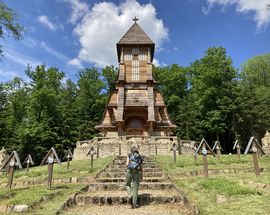
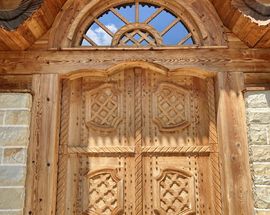
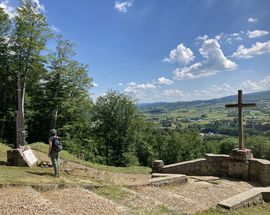
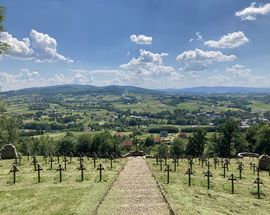
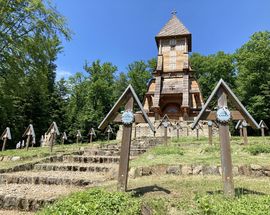
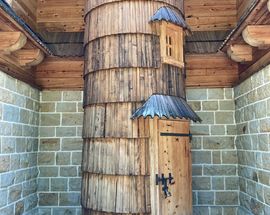
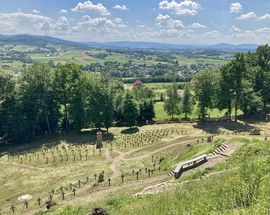
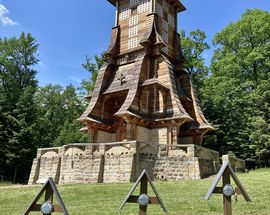
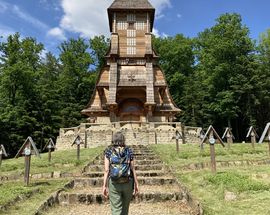
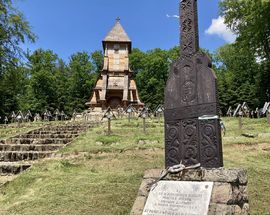
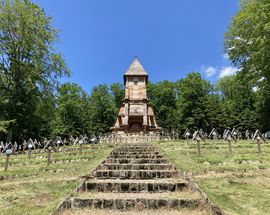
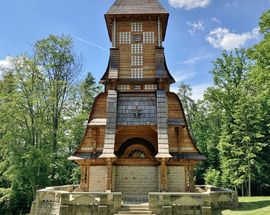

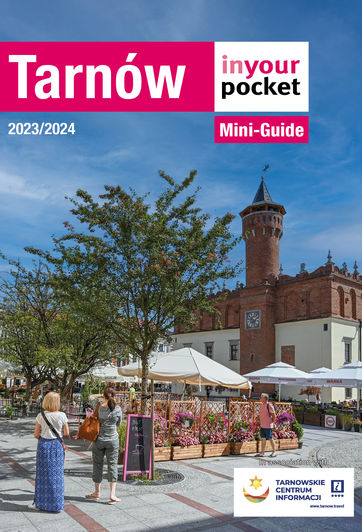
Comments